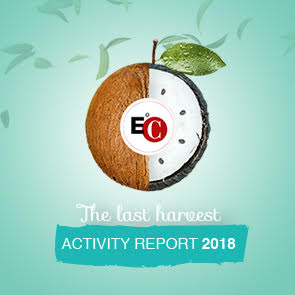Companies with ideal motives
Is the Economy of Communion just business with a social conscience? Turns out it’s much more.
by Luca Crivelli
from the "Economy of Communion - A New Culture" n.33 – editorial insert attached to Città Nuova n.13/14 - 2011 - July 2011
 There are three types of companies that transcend traditional business principles, organizations that have what we might call “ideal motives.”
There are three types of companies that transcend traditional business principles, organizations that have what we might call “ideal motives.”
A first group consists of companies whose business serves to solve, in an indirect manner, social problems: for example, social entrepreneurship initiatives created to finance non-profit organizations. Their ideal goal is to partially or totally donate the profit earned in the market place. As such, their ideal goal becomes concrete only in retrospect when the profits are donated and then contribute to maintaining entities that operate beyond the market.
Another circle includes companies that are created to contribute directly and solve social ills: those companies working for the benefit of disadvantaged people. Examples of this type include Muhammad Yunus’ Grameen Bank and the subsequent development of so-called microcredit institutions. These institutions, along with the Grameen Bank and other multinational companies, are involved in launching activities designed to meet the needs of vulnerable people and to accomplish this task at the lowest possible price.
A third type of organization is one that, alongside its social goals, aims to humanize the economy, making the company more inclusive; examples here include credit unions, civil companies, and European social cooperatives.
The EoC's identity
It is not possible to associate EoC companies with just one of these three types of organizations with ideal motives. Allocating profit according to the three purposes, and the fact that funds are managed by the structures of the Focolare Movement (and through its NGO), would seem to show a certain affinity between the EoC and other North American social entrepreneurship structures. But even since May 1991, Chiara has indicated that job offers to those without opportunities and community participation in the ownership of business parks and manufacturing facilities — “We are poor, but many” — are two of the best ways to directly solve exclusion and poverty problems. This would seem to move the EoC businesses closer to the social business of Yunus.
Finally, the EoC is not limited to promoting entrepreneurial initiatives but aims to create a different economic system. Just think of the creation of alternative products and Chiara’s invitation in 2007 to create “businesses of communion,” rethinking the traditional organizational structure for businesses.
The fact that we cannot classify the EoC completely within any of the three categories above indicates that its identity must lie elsewhere.
Chiara revealed the EoC’s true identity when she described the EoC as being entirely “a structure of love.” The ultimate goal of EoC companies is to help achieve universal brotherhood. Any action toward anyone who comes into contact with the company can increase communion and help achieve the real goal.
Size and fragility
But the EoC’s greatness is also its limitation. If its purpose is to promote fraternity, it is by nature vulnerable and fragile because it has such a far-reaching goal.
“Generating communion” is an objective that is difficult to measure, to have key performance indicators and build frameworks for, and it could easily succumb to relying only on the numbers listed on a company’s income statement.
If we do not strive to attempt to formulate institutional solutions and lasting accountability mechanisms, the EoC is likely to remain an ethic of intentions, a lofty but nebulous ideal.
That is why mature companies have adopted accountability practices and taken on stringent commitments. These can be applied to the three types of organizations with ideal motives that were mentioned above.
A first group of EoC companies has been radically committed to donating a substantial portion of their profits, faithfully following the logic of the three thirds. (In the last 10 years a little more than five percent of the companies have donated 80 percent of the EoC profits.)
A second group took a direct role in the fight against various forms of poverty, developing microcredit activities, creating business incubators to reduce youth unemployment, hiring disadvantaged workers and producing innovative products to reduce environmental impact.
A third group of EoC companies is trying to rethink the management tools needed to achieve brotherhood in corporate governance. At the forefront of this endeavor are the social cooperatives, but also many “normal” companies that have instituted forms of “governance of communion.”







